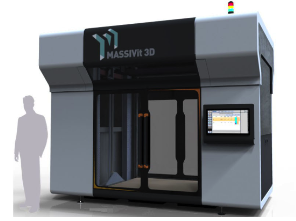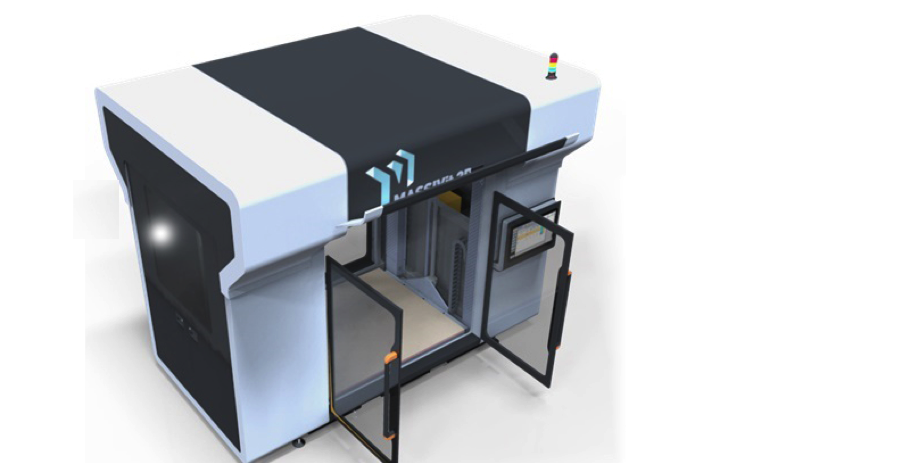 Bigger is seemingly always better, at least when it comes to the interest our readers have shown with 3D printing stories. Over the last couple of years we have seen extraordinary advancements within the 3D printing space, especially when it comes to size. What had been a technology confined to smaller objects is now a technology with boundless limitations. We’ve seen homes printed, cars printed, and even entire apartment buildings fabricated via 3D printers. The crazy thing is that we are only at the tip of the iceberg as new technologies and techniques for 3D printing large objects come online.
Bigger is seemingly always better, at least when it comes to the interest our readers have shown with 3D printing stories. Over the last couple of years we have seen extraordinary advancements within the 3D printing space, especially when it comes to size. What had been a technology confined to smaller objects is now a technology with boundless limitations. We’ve seen homes printed, cars printed, and even entire apartment buildings fabricated via 3D printers. The crazy thing is that we are only at the tip of the iceberg as new technologies and techniques for 3D printing large objects come online.
One such new technology has recently been unveiled by an Israeli startup called MASSIVit 3D. The company, which was founded in 2013 by a group of industry veterans with 50 years of experience within the 3D printing space, has taken the cover off of a brand new 3D printing technology that they call GDP. Although the technology may eventually rake in billion of dollars for the startup, GDP doesn’t stand for Gross Domestic Product. Instead it’s an acronym for Gel Dispensed Printing, a new method which fabricates incredibly large objects, extremely fast, using a combination of FDM and SLA techniques.
Similarly to your typical FDM/FFF 3D printer, only on a much larger scale, an extruder moves along three axes, while it prints one layer at a time. The material, however, is not your typical thermoplastic which hardens as it cools. Instead MASSIVit 3D utilizes a proprietary photosensitive gel which is extruded and almost instantly cured via UV light. This unique material, combined with their smart support system, allows the company to fabricate objects at exceptionally rapid rates of speed.
MASSIVit 3D has produced three generations of prototype machines as well as numerous gel material compositions, and is now running three machines within their facility, all which are able to print consistently. The GDP machines have the following specifications:
- Build Envelope: 1.5 x 1.2 x 1.8 m (4 x 5 x 6 ft)
- Print Speed: 1,000mm / 39 inch per sec in x & y-axis
- Print Productivity: up to 35cm / 1 ft of object per hour
That’s right, the GDP printer is able to print a full size statue of a 5-foot-tall human being in approximately 5 hours. Additionally it can print multiple items on the build platform parallel to one another, and requires less material than one would guess, as they utilize a ‘support-less’ system of printing.
As a way to show off the new machines, MASSIVit has recently printed out the body of Local Motors’ Strati car, using Autodesk’s Spark platform as their machine’s operating system. The car, which made headlines last year as Phoenix-based Local Motors unveiled their plan to 3D print automobiles, was an exceptional test to show off the capabilities of MASSIVit’s GDP technology.
Although the vehicle they printed won’t be driven any time soon, MASSIVit hopes to bring clients in who are interested in printing promotional items such as showroom displays and large-scale advertisements. The company, which now has over 25 employees, is anticipating rapid growth, recently moving into a 600-square-meter facility in the Industrial Zone of Lod, Israel, as they obtained funding from the Office of the Chief Scientist in Israel for an further R&D as well as production.
As this technology progresses and MASSIVit is able to synthesize even more innovative materials, it will be interesting to follow this company very closely. Let us know your thoughts on this unique method of 3D printing in the MASSIVit 3D GDP Printing forum thread on 3DPB.com. Be sure to check out the machine in action in the video below:
Subscribe to Our Email Newsletter
Stay up-to-date on all the latest news from the 3D printing industry and receive information and offers from third party vendors.
You May Also Like
Precision at the Microscale: UK Researchers Advance Medical Devices with BMF’s 3D Printing Tech
University of Nottingham researchers are using Boston Micro Fabrication‘s (BMF) 3D printing technology to develop medical devices that improve compatibility with human tissue. Funded by a UK grant, this project...
3D Printing Webinar and Event Roundup: April 21, 2024
It’s another busy week of webinars and events, starting with Hannover Messe in Germany and continuing with Metalcasting Congress, Chinaplas, TechBlick’s Innovation Festival, and more. Stratasys continues its advanced training...
3D Printing Webinar and Event Roundup: March 17, 2024
It’s another busy week of webinars and events, including SALMED 2024 and AM Forum in Berlin. Stratasys continues its in-person training and is offering two webinars, ASTM is holding a...
3D Printed Micro Antenna is 15% Smaller and 6X Lighter
Horizon Microtechnologies has achieved success in creating a high-frequency D-Band horn antenna through micro 3D printing. However, this achievement did not rely solely on 3D printing; it involved a combination...































